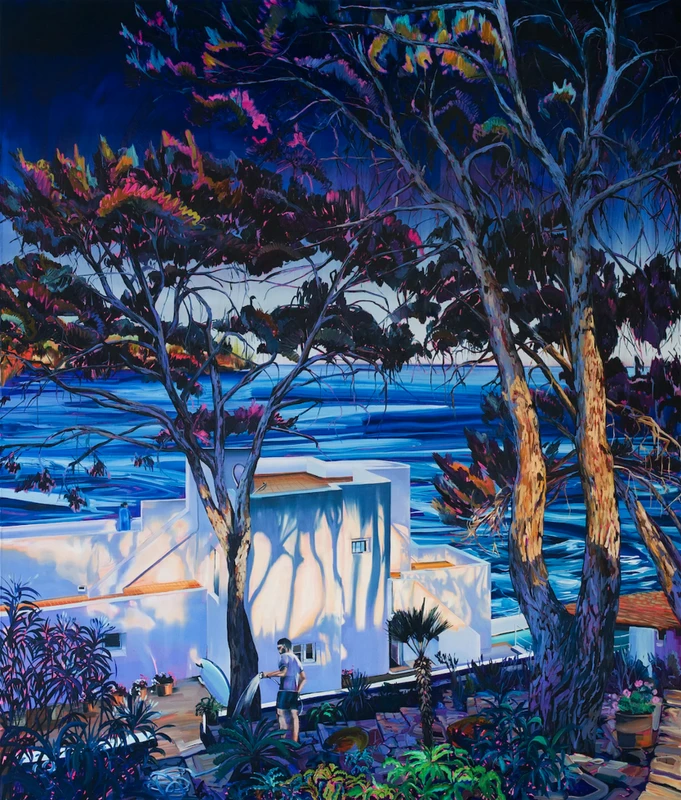Rex Southwick: To Distraction
29 May-6 Jul 2025
PV 29 May 2025, 6-8pm


“Rex’s works offer a dialogue between escapism and the often-overlooked reality of maintaining that escape.”
– Catherine Loewe, Curator
The title of Rex Southwick’s latest solo exhibition with Unit is borrowed from Dorothea Tanning’s expansive 1962 painting, Éperdument, created after her relocation from America to the South of France in search of creative refuge in 1957.
To Distraction mirrors a journey in search of escape along the Côte d’Azur, which has long attracted artists and architects seeking respite from urban life. This series emerged from Southwick’s time at an artist residency in one of Jacques Couëlle’s iconic sculptural Landscape Houses above the Bay of Cannes. Southwick’s large-scale paintings depict a quiet, often mundane “backstage” view of some of the Riviera’s most notable – and lesser-known – architectural dwellings. A recurring theme in his practice is the relationship between individuals and the spaces they inhabit, and how environments influence behaviour.
The works span from the pioneering modernism of the 1920s, exemplified by Villa E-1027, to the exuberant forms of the 1980s, such as the Palais Bulles – an emblem of the bubble house craze that swept France. For Southwick, the true value of the Côte d’Azur lies in its dense concentration of diverse, high-quality architecture and artistic heritage, packed into a remarkably compact stretch of coast.
These paintings reflect a quiet authenticity and labour – a recurring motif in Southwick’s work. They offer a dialogue between escapism and the often-overlooked reality of maintaining that escape. There is undeniable beauty in the unspoiled landscape, yet every setting is inevitably touched by human presence. Rather than reject this, Southwick embraces and highlights it, creating compositions that are dense with visual information but grounded in deliberate design and formal integrity.
Many compositions reference the work of Pierre Bonnard, who lived just a short distance from Couëlle’s “Dragon Hill” Landscape House, where Southwick developed this series. Bonnard’s home in Le Cannet, once a tranquil hilltop village above Cannes, is now part of the dense urban sprawl of the Alpes-Maritimes.
Bonnard often painted his terrace with glimpses of the sea beyond, framed by ambiguous forms along the edges of the canvas. These peripheral blocks of colour and shape find echoes in Southwick’s work – silhouettes of gardeners, architectural elements, or simply abstract forms close to the viewer, hinting at something just outside the frame or deliberately concealed.